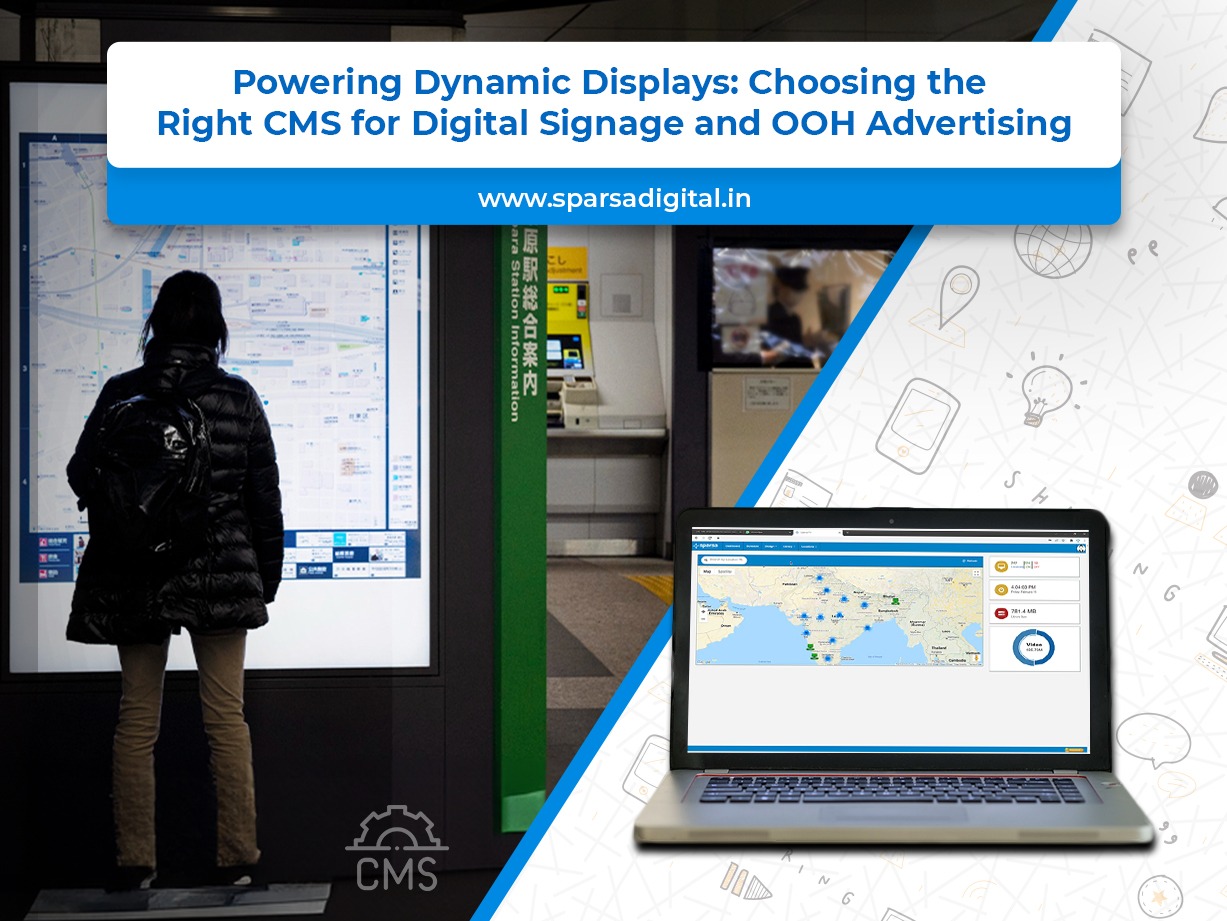In the bustling world of digital marketing and outdoor advertising, the role of Content Management Systems (CMS) is paramount. With the rise of digital signage and Out-of-Home (OOH) advertising, businesses are constantly seeking efficient and effective ways to manage their content and captivate their audience. In this blog, we delve into the significance of CMS for digital signage and OOH advertising, and how choosing the right platform can elevate your marketing efforts to new heights.
Understanding Digital Signage and OOH Advertising
Digital signage refers to the use of digital displays, such as LCD, LED, or projection screens, to showcase multimedia content in public spaces. It has become a ubiquitous presence in retail stores, airports, restaurants, and various other venues, offering dynamic and eye-catching ways to engage with audiences.
On the other hand, Out-of-Home advertising encompasses a broad spectrum of advertising strategies targeting consumers when they are outside of their homes. This includes billboards, transit ads, street furniture ads, and more. OOH advertising has evolved significantly in recent years, incorporating digital technologies to deliver more interactive and impactful campaigns.
The Role of CMS in Digital Signage and OOH Advertising
A robust CMS serves as the backbone of any successful digital signage or OOH advertising campaign. It empowers marketers and advertisers to efficiently manage and deploy content across multiple screens and locations, ensuring consistency and relevance.
Content Creation and Management
A robust CMS for digital signage and OOH advertising should offer intuitive and feature-rich tools for content creation and management. This includes:
- Template Design: Pre-designed templates make it easy for marketers to create visually appealing content without extensive design experience. These templates can be customized with brand assets, messaging, and dynamic elements to suit specific campaigns.
- Scheduling: The ability to schedule content in advance is essential for ensuring timely and relevant messaging. Marketers can plan campaigns weeks or even months in advance, with the flexibility to adjust schedules based on changing priorities or external factors.
- Dynamic Content: Dynamic content capabilities enable real-time updates and personalized messaging based on factors such as location, audience demographics, or environmental conditions. This allows advertisers to deliver more targeted and engaging experiences that resonate with viewers.
Remote Management and Monitoring
Remote management and monitoring functionalities are critical for overseeing digital signage networks efficiently. Key features include:
- Centralized Control: A centralized dashboard provides administrators with a comprehensive view of all connected displays, allowing them to manage content, schedule updates, and monitor performance from a single interface.
- Remote Updates: Remote update capabilities enable administrators to push content changes to displays across multiple locations instantly. This eliminates the need for manual intervention and ensures that campaigns remain current and relevant.
- Health Monitoring: Real-time monitoring of display health and performance metrics allows administrators to identify and address technical issues proactively. This minimizes downtime and ensures optimal uptime for advertising campaigns.
Integration with Third-Party Systems
Integration with third-party systems enhances the functionality and effectiveness of a CMS for digital signage and OOH advertising. Key integrations include:
- Data Sources: Integration with data sources such as CRM systems, social media platforms, and weather APIs enables advertisers to incorporate real-time data into their campaigns. This allows for dynamic content updates based on factors like inventory levels, social media mentions, or weather conditions.
- Analytics Platforms: Integration with analytics platforms provides insights into campaign performance, audience engagement, and conversion metrics. By analyzing these data points, marketers can optimize their campaigns for maximum impact and ROI.
- Content Management Systems: Integration with other content management systems streamlines workflows and content distribution processes. For example, marketers can repurpose existing digital assets or leverage content syndication partnerships to expand their reach and scale their campaigns more efficiently.
Choosing the Right CMS
When selecting a CMS for digital signage and OOH advertising, there are several factors to consider:
Scalability: Ensure that the CMS can scale with your business needs, supporting a growing number of displays and locations without compromising performance.
Flexibility: Look for a CMS that offers flexibility in content creation and management, allowing you to easily customize and adapt your campaigns to changing requirements.
Reliability: Choose a CMS with a proven track record of reliability and uptime, minimizing the risk of disruptions to your advertising campaigns.
Support and Training: Consider the level of support and training offered by the CMS provider, as well as the availability of resources such as documentation, tutorials, and user communities.
Cost: Evaluate the total cost of ownership, including upfront fees, ongoing subscription costs, and any additional expenses such as hardware requirements or integrations.
By carefully assessing these factors and selecting the right CMS for your digital signage and OOH advertising needs, you can create engaging and impactful campaigns that resonate with your target audience and drive results.
Conclusion
In the fast-paced world of digital marketing and outdoor advertising, the role of CMS cannot be overstated. Whether you’re managing digital signage displays in retail stores or launching a city-wide OOH advertising campaign, choosing the right CMS is essential for success. By prioritizing scalability, flexibility, reliability, and support, you can empower your marketing efforts and deliver compelling experiences that captivate audiences and drive business growth.

